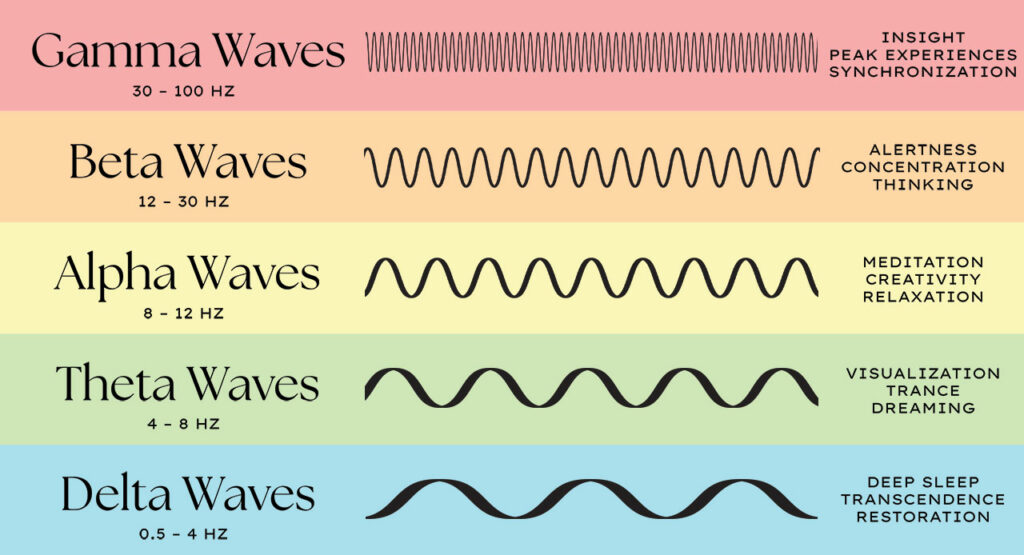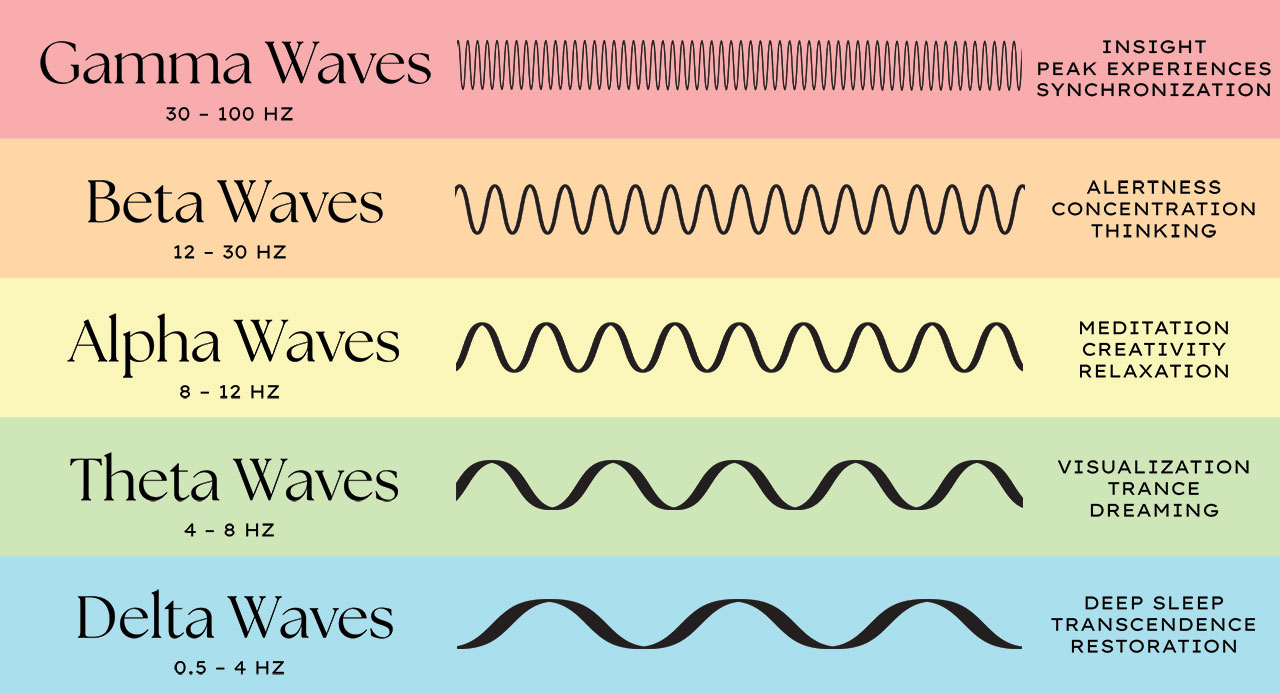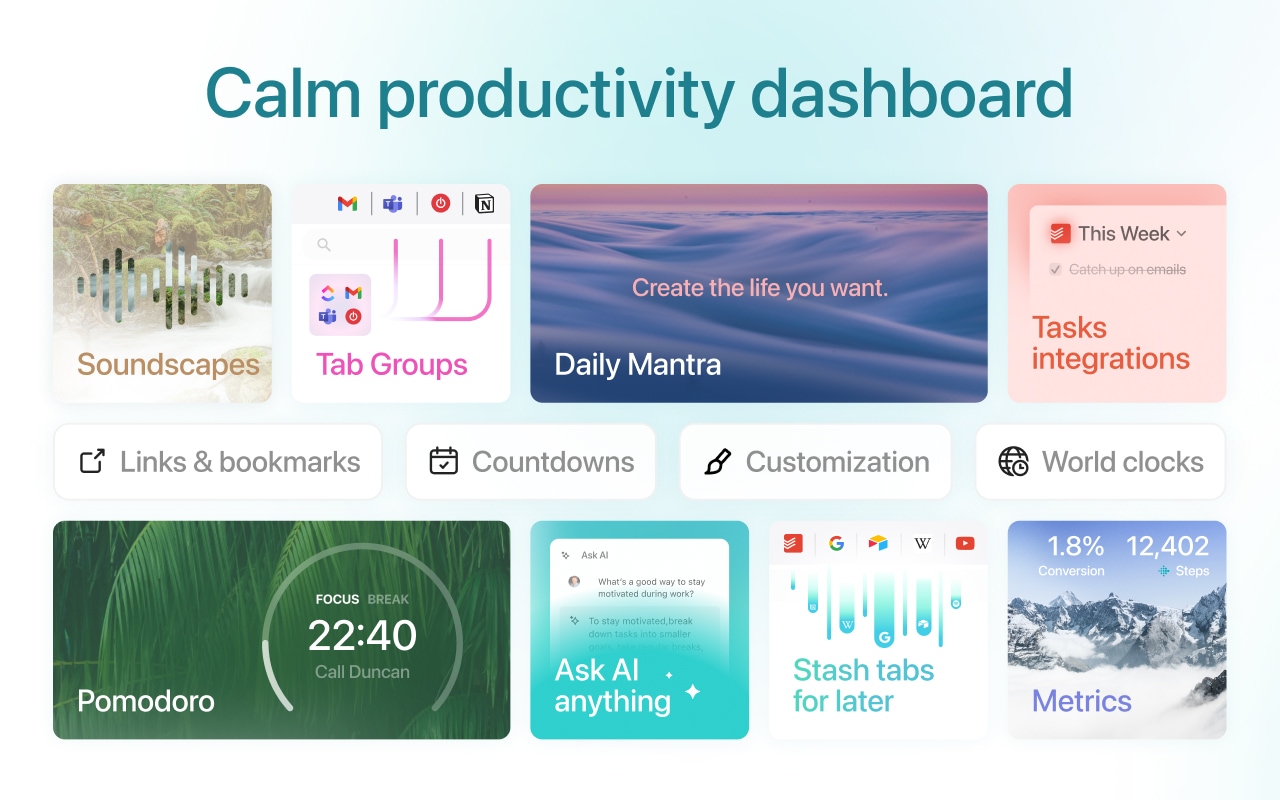While there are different kinds of ADHD, this is a general guide to experimenting with music that uses brainwave entrainment frequencies for improving focus and motivation.
These ADHD music frequencies can be used with binaural beats and isochronic tones. While binaural beats have one consistent frequency and don’t have to be audible to be effective, isochronic tones pulse in rhythm and they have to be audible to be effective.
Another important difference between these two types of brainwave entrainment music is binaural beats require headphones to be effective while isochronic tones can be played from a speaker (although headphones are usually better for the entrainment effect).
Remember that it can take 5-10 minutes for your brain waves to entrain to a music frequency so you should focus for at least 25-minute work sessions. Also, it’s a good idea to focus on a single frequency range for a week to get an idea of what’s going to work for you as often you don’t get instant results.
If you would like some ADHD frequency music to apply what you learn in this guide, check my previous post on binaural beats and isochronic tones for ADHD.
The Science of Music Frequencies For Helping ADHD:
There have been a number of studies of binaural beats for improving focus and helping ADHD.
Binaural beats work through two tones with slightly different frequencies that play in each ear simultaneously. The brain way perceives the binaural beat and resonates to the frequency of the difference in the two tones, which is popularly known as brainwave entrainment.
In the scientific literature, brainwave entrainment is known as the frequency following response. Here are some studies showing the benefits for music with brainwave entrainment frequencies:
1. Improving Focus: A study by the Leiden Institute for Brain and Cognition in the Netherlands had 36 participants listen to gamma-frequency (40 Hz) binaural beats for 3 min before and during a task. They found that binaural beats enhanced attention to specific visual details.
2. Boosting Concentration: A study at Duke University Medical Center had participants listen to 30 minutes of beta (16-24 Hz) binaural beats. They found they had better-sustained concentration, less negative mood, and improved control of attention to resist distractions.
3. Improving ADHD: A pilot study at the University of South Florida College of Nursing on 20 young students with Attention Deficit Hyperactivity Disorder (ADHD) found that those who listened to binaural beats regularly for 3 weeks self-reported improvements in attention.
4. Boosting Cognition: A meta-analysis of binaural beats studies at the National University of Distance Education in Madrid, Spain found that listening to binaural beats before and during a task can boost memory, attention, and lower anxiety.
5. Improving Memory: Another study was done with three acoustic stimulation control conditions and three binaural beat stimulation conditions: None, Pure Tone, Classical Music, 5Hz binaural beats, 10Hz binaural beats, and 15Hz binaural beats. They found that listening to beta (15Hz) binaural beats significantly improved working memory (the ability to recall and retain multiple pieces of information).
Different studies have also found that music therapy can be an effective treatment for ADHD, background music can improve executive functioning and music an improve ADHD inattentiveness.

The Best Music For Improving ADHD Focus:
Essentially, binaural beast help your ADHD brain focus by making it easier to suppress the brain’s ability to direct itself toward irrelevant stimuli.
Different frequencies of binaural beats will entrain different brainwave states so here is a quick overview of how the 5 different brainwave frequencies can help you focus and improve ADHD distractibility:
1. Gamma Waves (30 – 100 Hz):
For those days when you’re struggling to focus on anything on your to-do list and stuck in a motivational slump, gamma waves can be really helpful. These high amplitude frequencies can jolt your brain into a state of hyperfocus. I recommend using a 40 Hz gamma frequency for this effect.
It is best to use gamma waves for only 1-2 hours a day because they are powerful and hyperfocus uses up a lot of energy. If you are already tired when using gamma waves to enter a hyperfocus state, it’s important to prioritize relaxing and recharging at the end of the day.
Gamma waves are also triggered during flow states. They typically also show up in short bursts when you are learning new things and having new insights. The gamma waves experienced in flow states are typically coupled with slower alpha brain waves that occur along the borderline with theta waves.
2. Beta Waves (12 – 30 Hz):
Typically people with ADHD have lower beta brainwave activity. The result of this is when you are trying to focus on a task on your to-do list it’s hard to initiate the task and you get stuck in procrastination and task paralysis.
For problem solving and routine tasks you struggle with, I recommend ADHD music frequencies between 15 – 20 Hz. For some people, higher frequencies of brainwave entrainment music can work even better so it’s important to experiment to see what works best for your unique ADHD brain.
For creative tasks, a lower beta frequency in the range of 12 – 15 Hz in what’s known as the sensory motor rhythm (SMR waves) is usually better. These SMR waves are typically trained in neurofeedback training for ADHD to improve focus and task initiation.
3. Alpha Waves (8 – 12 Hz):
If you have a creative practice to do or just want to relax then alpha waves are excellent for this. Alpha brain waves are good for focusing on meditation, visualization and relaxation.
Alpha waves are an important part of the release phase of the flow cycle. People with ADHD are often very good at getting into flow states but they need the structure and accountability so they don’t end up hyperfocused on the wrong activities.
While listening alpha frequency music in the form of binaural beats or isochronic tones is helpful, you can also get into an alpha state through meditation and mindful walking.
4. Theta Waves (4 -8 Hz):
Typically people with ADHD have an excess of theta waves. Theta is great for entering dreamlike states but it is not good for focus and concentration.
Theta can be helpful for doing short naps if you’re having an afternoon slump to let your mind wander and recharge your attention. I like listening to guided yoga nidra tracks for these naps to enter a regenerative theta state between waking and sleeping.
After taking an afternoon nap, you will usually find that your focus and concentration improves because you have rested and recharged your sensitive ADHD nervous system.
5. Delta Waves (0.5 – 4 Hz):
If you struggle with falling asleep then a brainwave frequency that starts in alpha, slows into theta and then to delta can mimic the natural cycle your brain goes through to fall asleep.
Typically people with ADHD struggle with insomnia and particularly turning off their minds and falling asleep at night. I have previously written about ADHD sleep tips and tricks that are crucial for creating the structure and environment necessary to consistently get good sleep.
Getting more delta wave activity during the deep sleep phase is vital for improving sleep quality, which in turn can significantly improve your focus and motivation during the day because high-quality sleep is crucial for peak cognitive performance.
Which ADHD Music Frequency Works Best?
Which ADHD music frequency works best for you? It’s all about experimenting as it will be slightly different for each person. Some people prefer binaural beats, others isochronic tones so see what works best for you.
I recommend initially focusing on brainwave entrainment music in the gamma wave and beta wave frequency as that tends to have the most impact for people with ADHD. Try different kinds of background music as well as different ADHD music frequencies across the spectrum of each brainwave state you want to entrain.
I’m passionate brainwave entrainment because it’s something that has really help me improve my focus and get more done without letting my ADHD tendencies hijack my attention. If you have any questions please feel free to reach out.
- 10 Tips, Tricks And Tools To Overcome ADHD Paralysis - March 19, 2025
- 10 Interesting Facts About Adult ADHD And Mental Health - March 18, 2025
- 15 Ways To Manage ADHD Without Meds By Biohacking Dopamine - February 14, 2025




